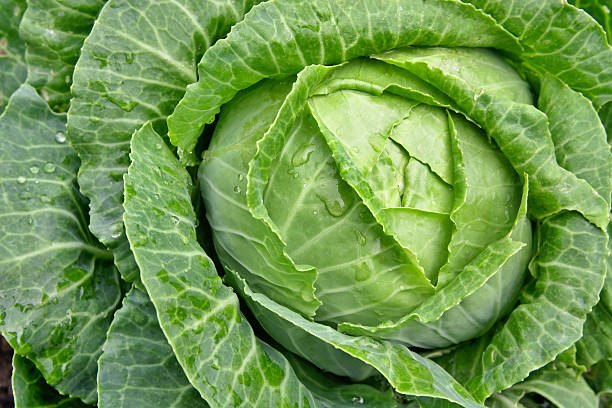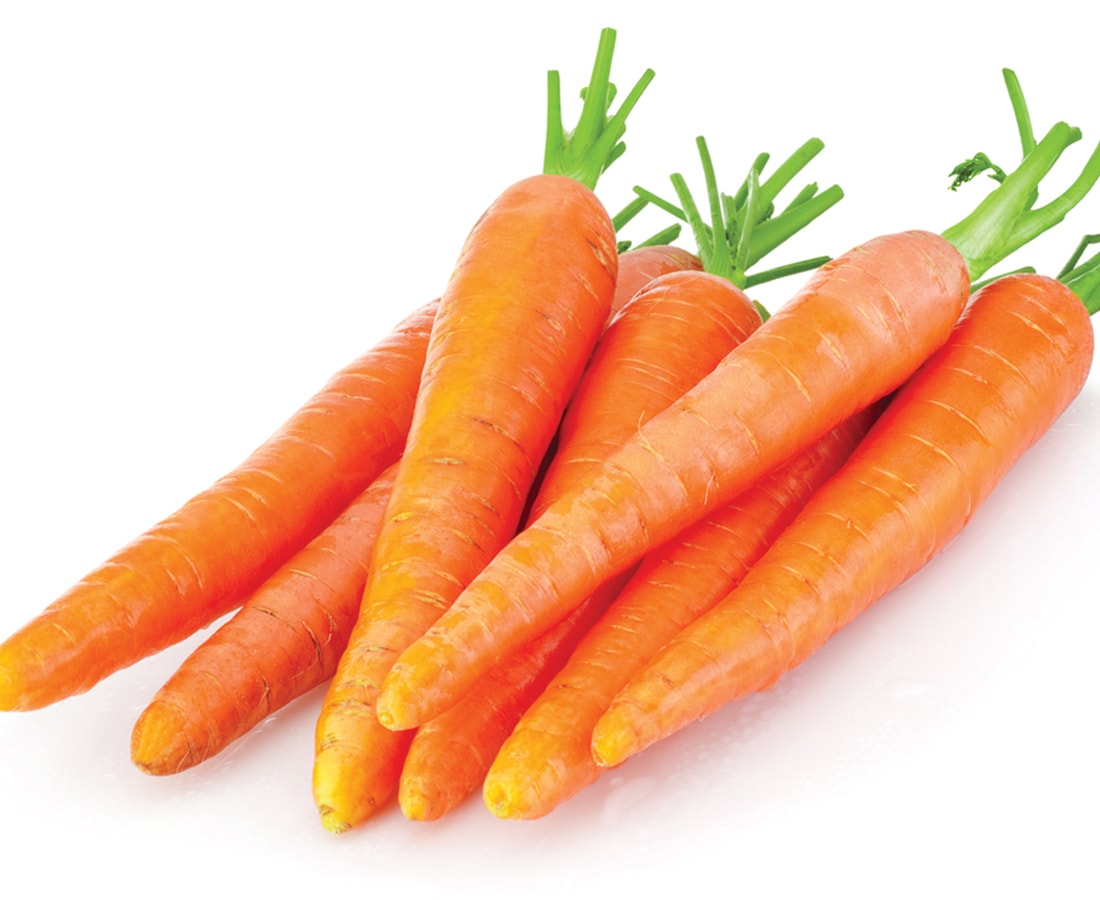CABBAGE
This is the most important vegetable grown for local fresh market. A little is exported. It is mainly used for cooking and as a salad. When dehydrated it can be used as Livestock feed.
Varieties
Cabbage varieties grown depend on market requirement and taste. Sugar loaf, Gloria F1 hybrid and Copenhagen are considered sweet tasting varieties. There are others for processing not mentioned here.


SPINACH
Spinach is grown for its succulent edible leaves. It is rich in vitamin A and high content of iron, calcium, phosphorus and vitamin C.
Varieties
Early hybrid No. 7, Bloom dale Longstanding, Giant Nobel, King of Denmark, New Zealand spinach, Fordhook giant.
CARROTS
Supplies the body with Vitamin A which is good for eye sight and smooth skin and is either eaten raw or cooked. It requires cool to warm climate because the roots are sensitive to high soil temperatures. It does best in well drained fine soils.
Varieties
The varieties include Chateney, Nantes, Amsterdam, Little finger, Sunrise, mini-color, Touchon and Ox Heart which may be used as livestock feed.


TOMATO
Tomatoes are popular vegetables in Kenya for use as fresh and for processing. They are processed into tomato paste, sauce and puree. They are used as a vegetable, jam making, provides vitamins and minerals.
Varieties
Fresh market: Caltana, Fortune maker, Money maker, Marglobe, Marmande, Elgon Dume, Eden, Beauty, Onyx,M-2, , Nemoneta, Beverly, Chonto, Bravo,
Plumty
Processing Variety: Cal J., Roma VF and M-82.
Other varieties: Anna F1, Eden F1, Monyala F1, Monset F1, Nuru F1 and Bingwa F1
BULB ONION
Onion is a biennial vegetable grown in many parts of the country either under rain fed or irrigation. Onions are used as vegetables in salads, soups and stews. They are mainly grown for the domestic market.
Varieties
Red Creole, Tropicana Hybrid, Bombay red, Red comet F1, Red nice, Red star F1, Sivan F1, Jambar F1, Pinnoy F1, Texas Grano, Bunching onion


KALES
The kale is a member of the cabbage family. It is widely grown and consumed in Kenya. Kales provide vitamins and minerals that protect our bodies against diseases.
Varieties
- Thousand headed – this is a popular variety mainly because its production lasts for many months if the lower leaves are harvested regularly
- Marrow stem – the variety is medium tall with dark green leaves that are finely curled
- Dwarf Siberian – this is a curly type whose plants remain dwarf and have very tasty leaves.
AMARANTH
Amaranth also known as the African spinach is cultivated for both its seeds which are used as a grain and its leaves which are used as a vegetable. Both the leaves and seeds contain protein of an unusually high quality. The leaves of both the grain and vegetable types may be used as vegetable. The amaranths that are grown principally for vegetable use have better tasting leaves than the grain types


SPIDER PLANT (SAGET)
This is an indigenous vegetable popular in Western, Nyanza, Rift valley and Coast provinces. The vegetable is highly nutritious and easy to grow.
CAPSICUM/PEPPERS (Capsicum spp)
Capsicum (called pilipili hoho in Kenya)are a hardy type of plant. It is rarely attacked by diseases or pests though it still needs proper preventive care. Capsicum farming in Kenya does best in hot areas. Capsicum and chili varieties are many and produce fruit with a wide range of shapes and colours. Chili varieties range widely in pungency.
Varieties
California wonder (OP), Early Cal Wonder(OP),Yolo wonder(OP, Mercury, Keystone Resistant Giant,Golden Bell (H), Aladdin (F1), Sirono (F1), Mayata(F1), Frenso (Bullet), Jalapeno (OP,Anaheim M (OP),
Long thin cayenne (OP), Long red cayenne (OP,Cayenne long slim, Large red cherry (OP)KEY: 1) OP = Open pollinated, H = Hybrid 2) Approximate No. of days from transplanting to first harvest
Other varieties include: a) Sweet pepper – Emerald Giant & Ruby Giant b) Jalapeno, Jwala, Sirrano, California habanero, Aladdin & Birdseye.


CORIANDER (Coriandrum sativum)
Coriander is easy to plant and take care of. The aroma of the leaves and the seeds is simply irresistible. Coriander grows with almost zero maintenance. From seed to plant, the coriander grows very vigorously and is ready to harvest in a span of a month and half to experience your return on investments but for seeds, you will need 3 to 4 months.
Locally, the demand for coriander is growing. The tender foliage is used to season and flavor curries
or mixed with other vegetables while its seeds are processed into mixed spices and curry powder.
Varieties
Vulgare – most common variety and microcarpum
BLACK NIGHT SHADE (Solanum nigrum)
Black Nightshade is an adaptable plant that flourishes in full or partial sun, moist to mesic situations, and almost any kind of soil, especially fertile loam with abundant nitrogen. The size of a plant depends heavily on moisture levels and soil fertility.
A popular local vegetable which does well in most soils, easy to manage requires little if any chemicals. It is high yielding and has very long harvesting period.
Varieties
Giant night shade (Broad leaved) and Black night shade (Narrow leafed).


PUMPKINS (Cucurbita pepo)
Pumpkin is a gourd-like squash of the genus Cucurbita and the family Cucurbitaceae. The plant is believed to have originated in North America. They vary greatly in shape, and size ranging from oblate to oblong. The rind is smooth and usually lightly ribbed.
The fruit colour ranges from orange to yellow, dark green, pale green, orange-yellow, white, red and gray.
Varieties
Connecticut Field, Cushaw Golden, Halloween (Jack O’ lantern) and Sugar pie.
